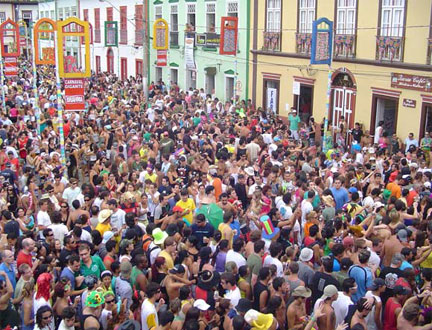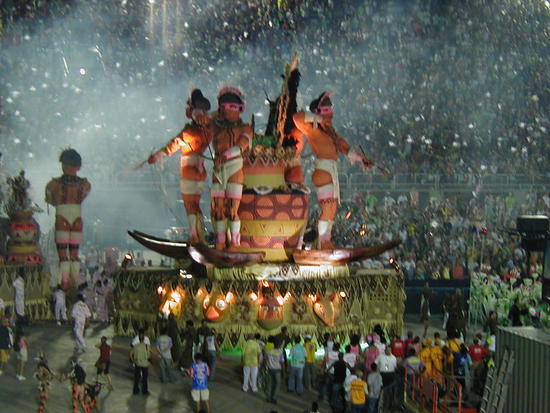Ah, the Carnaval is coming. In two weeks will begin the festivities, parades, dances and more in almost all Brazilian cities. Whether it is in the South or North, the life of all Brazilians are affected in one way or another due to this holiday.

Street Carnaval em São Luís do Paraitinga – São Paulo state
At this very moment, millions are already or are preparing to go to beautiful beaches Brazil (to be more specific, Brazil has 7 000 km of beaches). Other millions will celebrate the Carnaval in historic cities or in natural resorts throughout the country. And many more will enjoy the Carnaval in their own towns.
But there is a group of which I am part that do not like the Carnaval and this time of year the only thing to do is rent a chácara (a small farm) and spend some days with friends enjoying the holiday. I don’t like the dances and parades, but that does not mean that I’ll stay home praying or meditating. Hell no! During the Carnaval each should do what they like. This is one of the meanings of Carnaval.
But how could I explain what is the Brazilian Carnaval? The first thing to say about it is that the Carnaval is a state of mind in which the search for pleasure and fun should not be discontinued in 4 days and 5 nights of “madness.” All people of all races, all social classes and from any country can join this great party. It is possible to say that the Brazilian Carnaval is a celebration of exaggeration, the exalted sensuality and drunkenness (in Portuguese, the word “carnaval” can be used as a synonym of “orgy”).
Second, the Brazilian Carnaval is not limited to parades and dancing in some cities. In all states the Carnaval is celebrated simultaneously. The parades, the festivals and dances take place throughout the country.
And finally, the rhythms and dances of the Carnaval. There isn’t a single type of music and a specific type of dance for the Carnaval. The rhythms and dances vary geographically: samba (and its variations), axé, frevo, reggae, funk, techno, typical dances, maracatu, marches, forró, calypso, etc.

Carnaval Parade in Rio
It is the greatest manifestation of popular culture in Brazil, next to football (I refuse to call football as soccer!) and, as I said above, has a meaning of freedom for the population.
Officially, the Carnaval lasts four days and five nights, but it is common in touristic cities it begins before and ends several days after the official date, especially in northeastern Brazil.
Although the Carnaval has come to Brazil in the seventeenth century and was already widely celebrated since the eighteenth century, it was only in the nineteenth century, after the Independence of Brazil that the party was gaining the respect it has today. The local elites decided that the “Shrovetide” which was celebrated by the Portuguese should be replaced by something less violent and more civilized.
Thus when the carioca (from Rio city) elite decided to “import” the Carnaval of the French capital, in fact trying to get rid of the colonial past in an attempt at rapprochement with the new capitalist powers, especially France.
However, each region in the twentieth century was shaping the Brazilian Carnaval in its own way, adding unique features. And that is what makes the Brazilian Carnaval so diverse, both in the form of celebrations, as in musical rhythms.
In the next article, I write a little about the main events of Carnaval in Brazil.



